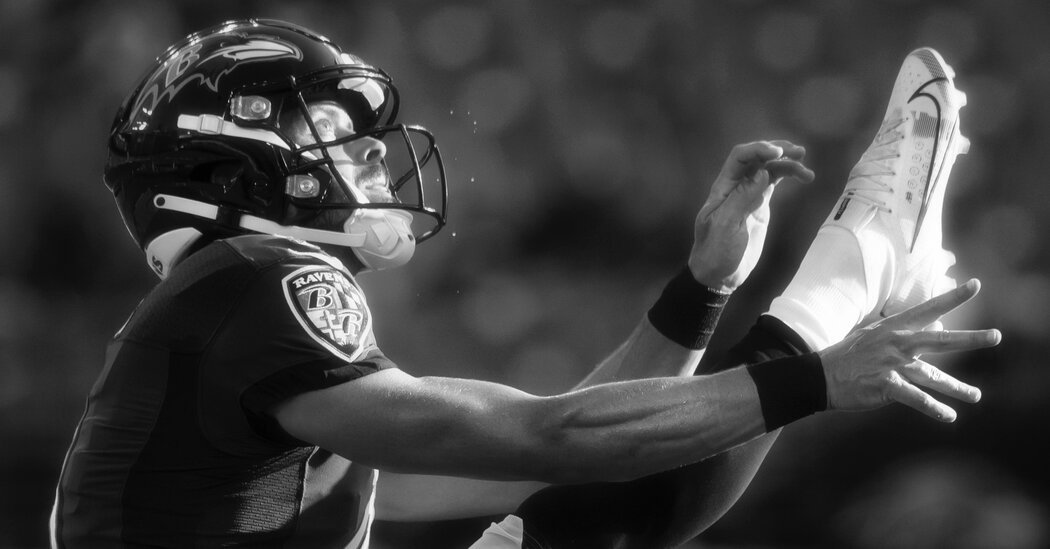
In his warm-up for practice the next day, Tucker attempted his first kick in a half-joking imitation. “Running through the kick, just totally exaggerated,” he says. He watched the ball pop off his foot with shocking speed, rocketing toward the uprights and smashing into a camera pole positioned directly at the center. He made three more kicks the same way. All three hit the pole. “So the first attempt I had that day with the team present was a 64-yarder,” he says, “and I just applied this new technique, the Gostkowski technique, and I don’t think I’d ever hit a ball as far in my life.” In the coming season, Tucker would use the skipping technique for every kick, missing just one of 39 field goal attempts to end the year at the top of the league, with a field-goal percentage of 97.4 percent.
Tucker has been skipping through his kicks ever since, but more important, so have countless other players at every level of the sport. A technique that even Tucker found comically eccentric has, in part through Tucker’s prominence, already become respectable. One kicking manual published last year, Eric Piccione’s “The Art of Kicking,” recommended “a Justin Tucker skip-through to ensure you’re getting downfield.”
But if Tucker’s tinkering with technique has helped to change the sport, it has also given him a unique range of options on any given play. That’s what made his record-setting 66-yard field goal possible — not the innate strength of his leg or the meticulous method that he has developed for field goals. On a day when everything felt off and his usual technique wasn’t delivering distance, he could tinker some more and cobble together a new kick on the fly. It was, he says, a hybrid approach, with elements that he normally uses for a kickoff. “So I took an extra half a step back into my stance, and I took a little crow hop into the ball, and a combination of divine intervention, adrenaline, technique that we had practiced for more than a decade, all came together in that moment.”
He said this on a blustery morning at the Ravens Training Facility a few weeks later, gazing through a bank of windows at the howling wind. Practice was about to begin, and he was eager to get outside. Tucker insists on testing his leg in all conditions: If the field is slick with ice and snow, or the sky is black with driving rain, he will drag his snapper and holder outside to see if they can beat the weather.
Today, as he suited up in the locker room, a scrum of reporters was milling around. They circled from player to player, asking detailed questions and nodding intently at the usual insipid answers: ball down the field, 110 percent, one play at a time. Tucker stood by his locker at the far end of the room and watched the commotion as he strapped on the last of his gear. Practice would start in less than a minute, but the reporters showed no sign of leaving.
Tucker waited a few minutes longer, then pulled out a four-foot length of PVC drain pipe that was stashed by his locker. He raised the end to his mouth and, with the embouchure of a trombonist, unleashed a deafening wail. The room fell silent, but only for a moment. When the chattering resumed, he blew the makeshift horn again, and then again a few seconds later. Tucker kept blowing the horn until the last reporter gave up and shuffled out. Then he returned the pipe to its hideaway and did what he has always done. Tucker got back to work.